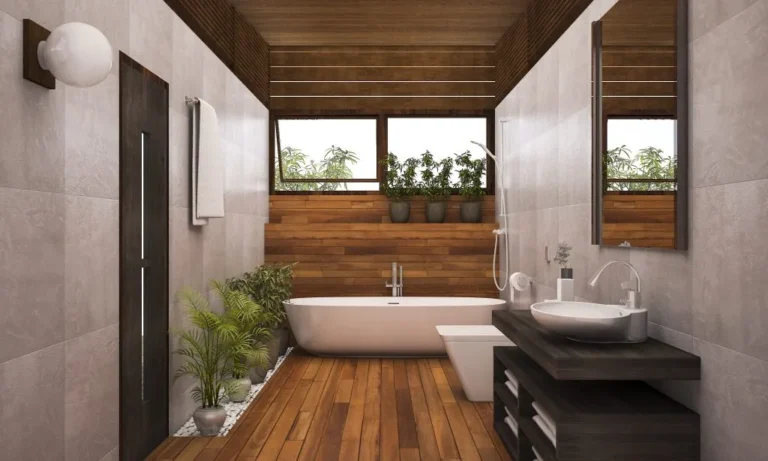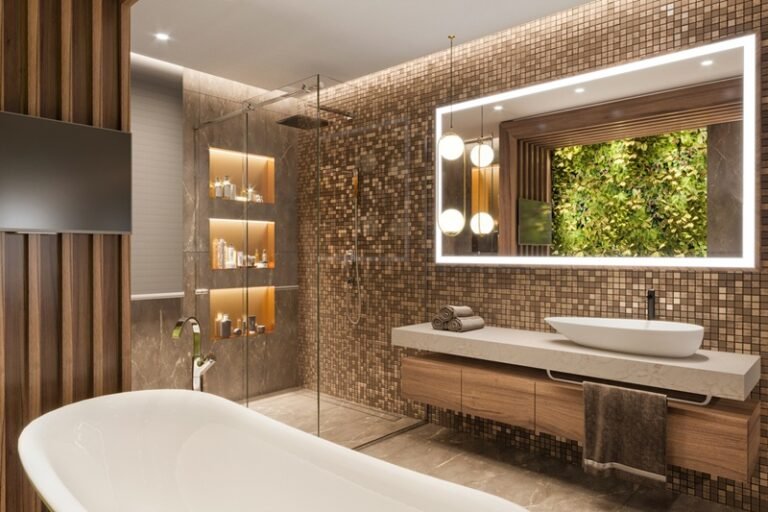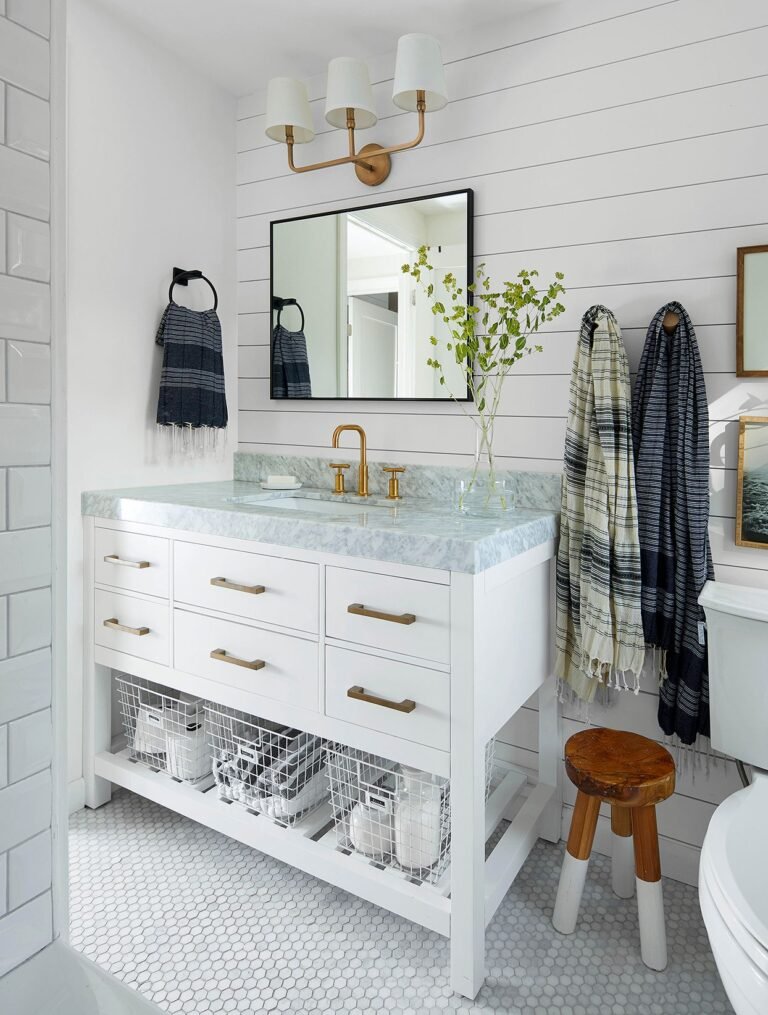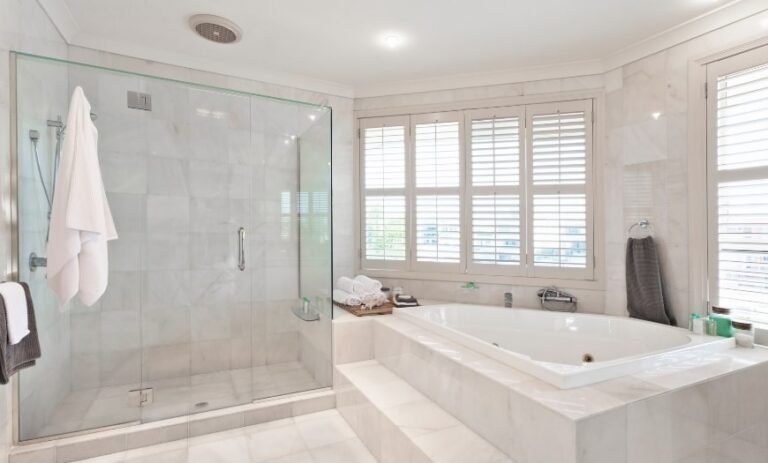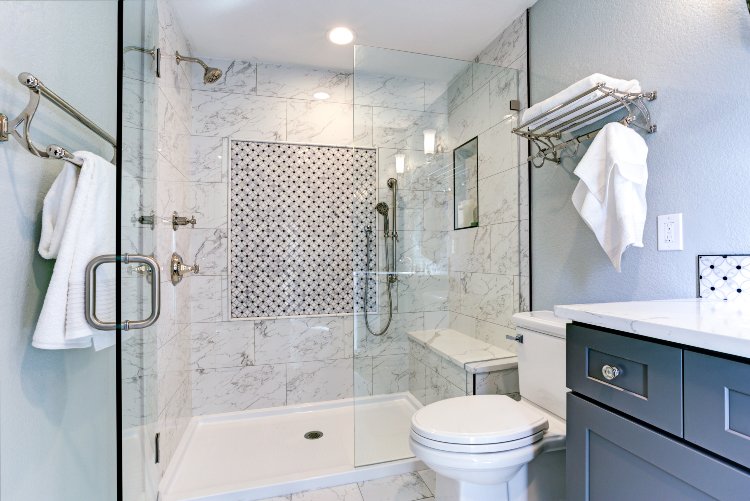Common Bathroom Remodeling Mistakes to Avoid
Remodeling a bathroom might look simple on paper, but it is rarely that way in real life. Many homeowners find themselves facing hidden problems, unexpected costs, or design regrets after the work is done. Planning and awareness go a long way in preventing these issues. Below, we will look at some of the most common mistakes people make during bathroom remodeling and how you can avoid them.
Poor Planning
Planning is the backbone of any remodeling project. Without a clear plan, mistakes will show up quickly.
Many people start by picking tiles or fixtures without first setting a budget or layout. This often leads to overspending or mismatched items. A solid plan should include a budget, timeline, and a layout that matches your needs.
Think about how the bathroom will be used daily. For example, a family with kids may need durable surfaces, while a single person might want more style-focused features.
What to Do Instead
- Write down your budget before buying anything.
- Sketch out a layout of your bathroom.
- List your must-haves and nice-to-haves.
- Leave some money aside for unexpected costs.

Ignoring Ventilation
Bathrooms produce a lot of moisture. Without proper airflow, you may face mold, peeling paint, or warped wood.
Many homeowners spend thousands on new finishes but forget to update or install a good exhaust fan. Even windows are not always enough, since they cannot always be opened year-round.
How to Fix It
- Install a strong, quiet exhaust fan.
- Place the fan near the shower or tub.
- Run the fan for at least 20 minutes after each shower.
Overlooking Storage
Storage often gets forgotten in favor of style. Sleek sinks and floating vanities look nice, but where will you keep your towels or toiletries?
A bathroom with no storage will quickly get cluttered. This reduces both comfort and value.
Smart Storage Ideas
- Use vanities with built-in drawers.
- Add shelves above the toilet.
- Choose mirrored cabinets instead of flat mirrors.
- Use baskets for small items.
Choosing the Wrong Materials
Bathrooms deal with water daily. Some materials just do not hold up well in wet areas.
Wood floors, wallpaper, or porous stones can stain, warp, or grow mold over time. They may look good for a while, but they will not last long.
Better Choices
- Ceramic or porcelain tile for floors and walls.
- Quartz or granite for counters.
- Waterproof paint on walls.
- Vinyl flooring as a budget-friendly option.
Poor Lighting
Bad lighting makes even a nice bathroom feel dull. Many bathrooms rely only on a single ceiling light, which creates shadows.
Shaving, makeup, or other daily routines need good lighting. Poor lighting can also make the space feel smaller.
Lighting Tips
- Place lights on each side of the mirror.
- Use dimmable lights for flexibility.
- Add ceiling lights for general brightness.
- Consider LED bulbs to save energy.
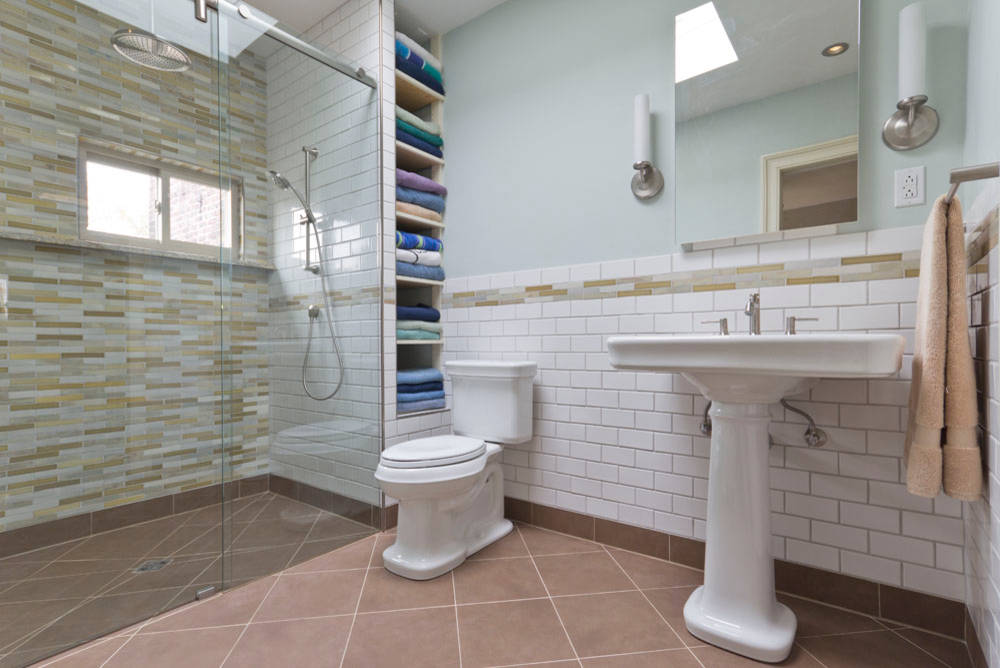
Not Thinking About Layout
Sometimes, homeowners try to move fixtures without considering plumbing needs. Moving a toilet or shower can be expensive and risky if not done right.
A poor layout can also make the room feel cramped or awkward. For example, a door that opens into the toilet is never pleasant.
Smart Layout Planning
- Keep plumbing in the same location when possible.
- Make sure doors do not block fixtures.
- Leave enough space around sinks and toilets.
- Consider both function and comfort.
Forgetting About Safety
Bathrooms can be slippery places. Without safety features, they may pose a risk to kids, seniors, or even healthy adults.
Polished tiles or rugs without grips can lead to falls. Hot water that is too hot can cause burns.
Safety Measures
- Use slip-resistant tiles.
- Add grab bars in showers.
- Set the water heater to a safe level.
- Place rugs with non-slip backing.
Skipping Professional Help
Many homeowners believe they can handle bathroom remodels themselves. While some tasks are DIY-friendly, plumbing and electrical work often require skill.
Mistakes in wiring or plumbing can cost more to fix later than hiring a pro from the start.
When to Call a Pro
- Moving or installing plumbing fixtures.
- Updating electrical wiring or outlets.
- Tiling large areas.
- Installing heavy items like bathtubs.
Not Setting a Realistic Budget
People often set budgets that are too low. They forget about small costs like hardware, sealants, or delivery fees.
Surprise repairs, such as water damage inside walls, may also increase costs. A remodel rarely goes exactly as planned.
Budgeting Tips
- Add at least 10–15% for unexpected costs.
- Compare prices before buying.
- Don’t overspend on trends that may go out of style.
- Keep long-term durability in mind.

Forgetting Future Needs
A bathroom remodel should serve you for years, not just today. Some homeowners design for looks without thinking about aging or changes in family size.
For example, a walk-in shower may work better than a tub as you get older.
Plan Ahead By
- Choosing easy-to-clean materials.
- Adding wider doorways if space allows.
- Leaving room for grab bars if needed later.
Rushing the Job
Impatience is common in remodeling. People want quick results, but rushing can cause sloppy work.
Poor tiling, uneven paint, or skipped prep work often lead to problems down the road.
Why Patience Matters
- Let paint dry fully before second coats.
- Give grout time to cure before using the shower.
- Double-check measurements before cutting.
Ignoring Small Details
Small details can make or break the design. For example, mismatched fixtures or poorly placed towel bars can ruin the look.
Even the choice of caulk color can stand out more than you expect.
Details to Watch
- Match metals in faucets, lights, and handles.
- Place outlets in useful spots.
- Align tiles carefully for clean lines.
- Choose finishes that fit the rest of the home.
Falling for Trends
Trendy designs may look fresh today but feel dated tomorrow. A bathroom is not as easy to update as a living room.
Bright colors or unusual tile shapes might be fun, but they can limit resale appeal.
A Balanced Approach
- Pick neutral main surfaces.
- Use bold colors in towels or decor.
- Choose timeless shapes and fixtures.
Not Measuring Right
A common mistake is not double-checking measurements. Buying a vanity that does not fit or a mirror that is too tall can delay the project.
Even small errors can cause big problems with plumbing or storage.
How to Avoid This
- Measure the space more than once.
- Check dimensions of every item before buying.
- Allow space for doors and drawers to open.
Skipping Waterproofing
Behind the tiles, waterproofing is just as important as the surface. Without it, water can seep into walls and floors.
Leaks might not show right away, but over time they cause mold and damage.
Proper Waterproofing
- Use waterproof membranes behind showers.
- Seal grout and tiles after installation.
- Pay extra attention to corners and edges.
Forgetting About Cleaning
Some designs look nice but are hard to clean. Tiny tiles, deep grout lines, or complex fixtures can collect dirt.
The harder something is to clean, the less you will enjoy it over time.
Easier to Clean Options
- Large tiles with thin grout lines.
- Wall-mounted sinks and toilets.
- Smooth surfaces without deep textures.
Conclusion
A bathroom remodel can be exciting, but it comes with many chances to make mistakes. Planning ahead, choosing the right materials, and balancing style with function will help you avoid regrets. Take your time, think about long-term needs, and do not be afraid to call a professional when needed.
By avoiding these common mistakes, you will end up with a bathroom that looks good, works well, and lasts for years.


